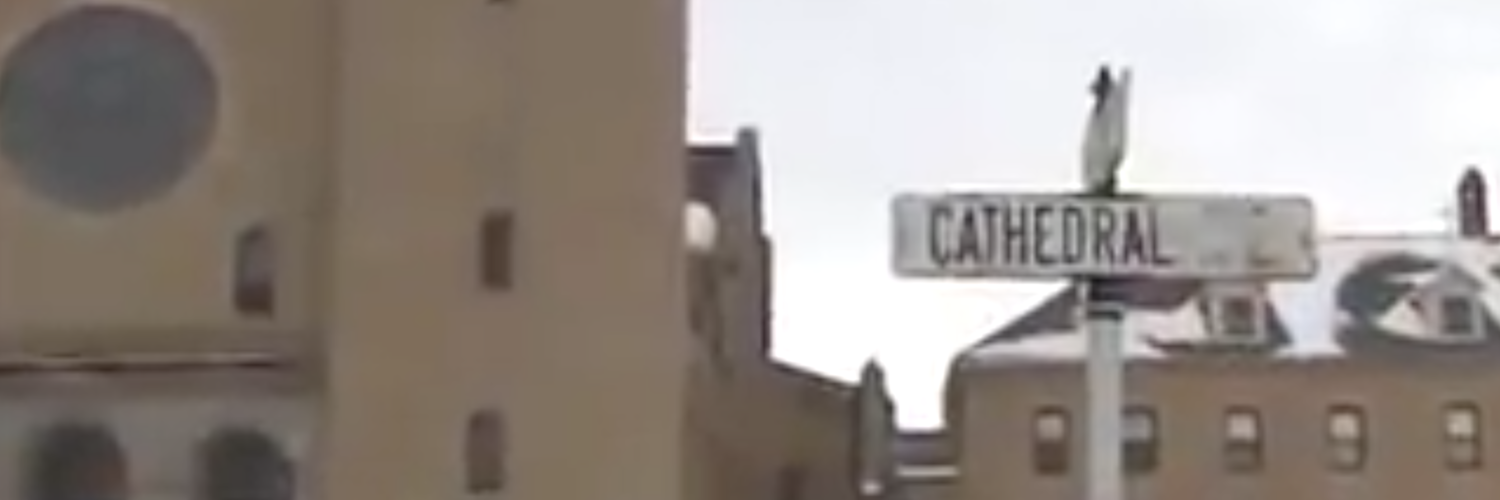For several months now, I have wondered when a major news organization was going to send a reporter and photographer out into the vast plains of Western Kansas to visit St. Fidelis Friary, which is next door to the giant Basilica of St. Fidelis — which is better known as the “Cathedral of the Plains.”
This small monastic community in Victoria, Kan., consists of five Franciscan Capuchin priests and a brother. At the moment, there is also a Catholic layman living quietly in that facility — the defrocked former Cardinal Theodore McCarrick.
If you’ve ever driven across Kansas, you have seen this church — because it’s hard to miss. I put it this way in an “On Religion” column last fall.
The Cathedral of the Plains can be seen long before Interstate 70 reaches Victoria, with its Romanesque spires rising out of the vast West Kansas horizon.
This is a strange place to put a sanctuary the size of the Basilica of St. Fidelis, but that’s a testimony to the Catholic faith of generations of Volga-German farmers. This is also a strange place to house a disgraced ex-cardinal.
However, the friary near the basilica has one obvious virtue, as a home for 88-year-old Theodore McCarrick. It’s located 1,315 miles from The Washington Post.
Now, we have a pretty lengthy television report from a Fox News team that made the long journey to try to knock on McCarrick’s door. (If there is a print version of this story, I have not been able to find it.)
I found myself wondering: Is it significant that it was Fox News that ventured out into the Kansas plains to cover this particular story?
Does that, in a strange way, prove that continuing to cover the McCarrick scandal is now officially “conservative” news territory — as in news that is only of interest to conservative Catholics and cultural conservatives in general? If so, why is that?
Here at GetReligion, I have argued that the heart of the latest chapter in the multi-decade Catholic clergy-abuse crisis can be summed up in three questions:
* Who promoted McCarrick into the highest ranks of the church hierarchy, even as reports circulated about his private affairs, sins and even crimes?
* Who protected him from public punishment?
* Who are the members of the current Catholic establishment — in Rome and the United States — who benefited from their relationships with McCarrick?
There have, in recent months, been reports about McCarrick being sent to this secluded home, a detail frequently attached to news about the secret Vatican investigation of his actions and the decision to dismiss the former cardinal from the clerical state (also known as laicization). Reporters have also noted that this disgraced former prince of the Church of Rome is living in a Catholic facility, even though he is now — technically, maybe — an ordinary layman who is free to go.
The Washington Post did report on some key details of McCarrick’s move to Kansas, in a story without of Victoria dateline. Here is a key section:
… McCarrick does not leave the friary, which is adjacent to the Basilica of St. Fidelis. … Peggy Fitzpatrick, a member of the pastoral council for the parish, said she was stunned to learn that the disgraced ex-cardinal she had heard about was living in her town. “All of a sudden, boom. Father told us about it after he was already here,” she said.
“It’s right a block from the elementary school. That had a lot of people worried,” she said. “Father John had his sermon and he assured everybody. And I have total faith in Father John. … He said there was no way [McCarrick] would have any contact with the public, and he hasn’t.”
The Fox News story includes several scenes typical of attempted got-you efforts of this kind, including footage of a reporter at the friary door — being told that McCarrick is not available for comment. Is that reason enough to drive hundreds of miles from Kansas City or Denver?
But watch the Fox report, anyway. The material that I find most interesting are the quotes in which local officials — including the new shepherd in Salina, Bishop Gerald L. Vincke — share the details of how they learned McCarrick was coming to town.
Traveling to this remote location did add one crucial element to this story. The images of this great church on the plains, and the people who live there, did put a spotlight on the fact that powerful church leaders in places like Washington, D.C., and Rome wanted to get McCarrick way, way, way out of their own zip codes.
So they sent him to Kansas.
On camera, Vincke describes his own emotions — part compassion, part anger and resentment — when learning that this “notorious sinner” was going to be moved into his quiet diocese. It’s impossible to know if McCarrick feels remorse, noted Vincke. The bishop did add that McCarrick is frequently going to Confession (“What he says, I do not know”).










